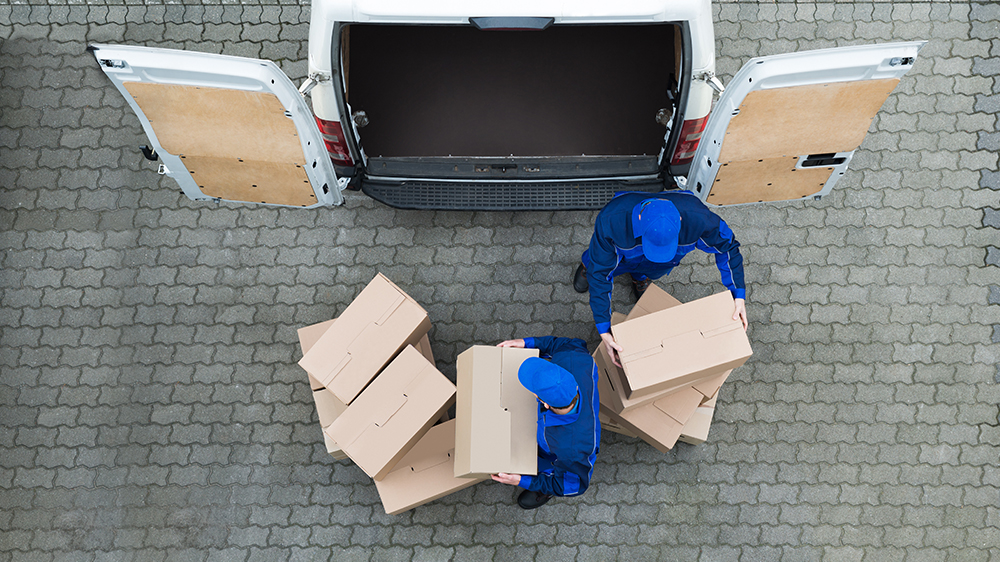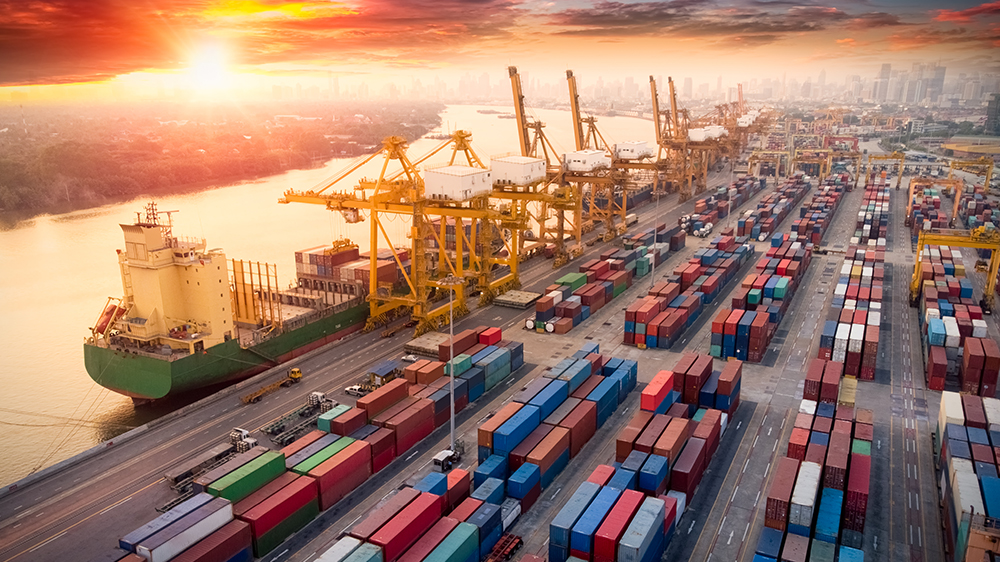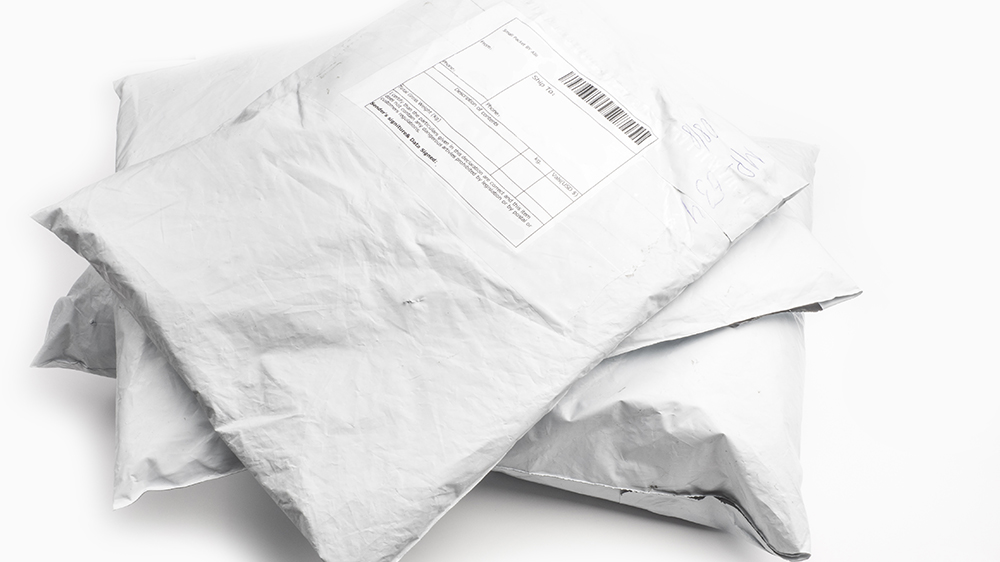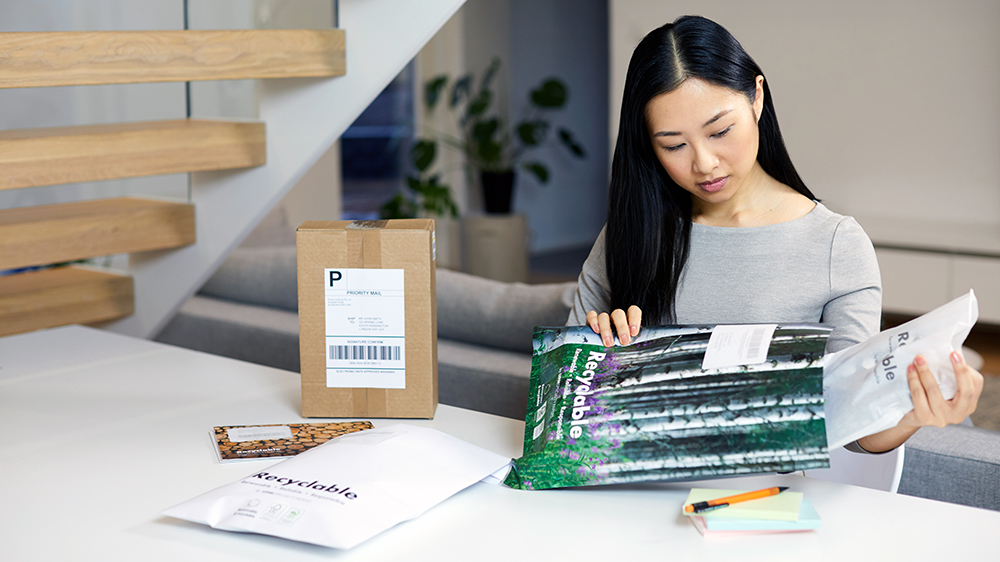Between 2014 and 2019, e-commerce sales ratios nearly tripled globally. The convenience of shopping online has only increased for consumers over the past year and a half as the world grapples with stay-at-home orders because of the COVID-19 pandemic.
However, this has put more vehicles on the road and shipping boxes, containers and bags into the supply chain, which is bad news for the environment and global efforts to curb carbon emissions. How can e-commerce help meet global demand for goods, while improving the sustainability of operations?
 Studies show that the average e-commerce sale produces 1.4kg of emissions and CO2 from trucks in the US. Photo: Shutterstock
Studies show that the average e-commerce sale produces 1.4kg of emissions and CO2 from trucks in the US. Photo: Shutterstock
The challenges ahead
As global consumption is unlikely to dip anytime soon, the e-commerce sector is now focused on helping deliver sustainability by improving different aspects of its operations. This is easier said than done as the sector has to deal with challenges such as deploying more logistical solutions to meet enhanced demand, producing more packaging to ensure products are delivered to customers safely, and the challenge of dealing with returned goods and packages.
“It is near impossible to become 100% sustainable across every detail and aspect. Each activity in the supply chain emits carbon and/or some other pollutant that contributes to climate change,” explains Dane Baker, co-founder and CEO of EcoCart an e-commerce plugin for stores to offer carbon-neutral orders and for shoppers trying to lower their carbon footprint.
E-commerce as a whole is a complex industry with numerous players. That said, the giants of e-commerce are also waking up to the responsibility. They have to ensure that all three ‘p’s (people, planet and profit) are respected for making their operations more sustainable.
"Over the past decade, we’ve all seen the growing interest in the impact of our industry on the world around us. With greater attention on the people who make our clothes and the conditions within which they work, to an increasing understanding of the environmental impacts our sector has, businesses must take bold and decisive steps to find solutions. Putting it simply, there has never been a greater imperative to act,” says Simon Platts, Responsible Sourcing Director at online retail giant ASOS.
 E-commerce players are working to ensure that all three ‘p’s (people, planet and profit) are respected. Photo: Shutterstock
E-commerce players are working to ensure that all three ‘p’s (people, planet and profit) are respected. Photo: Shutterstock
Taking the lead with sustainable packaging
Packaging is one area that e-commerce companies and brands are focusing on to initiate change. A typical product purchased online can come wrapped in as many as three to four layers of packaging including plastics, Styrofoam, bubble wrap and paper and cardboard. Multiply that by the number of such products that are being ordered through e-commerce every day and it is clear that solving this part of the problem could have a significant ripple effect.
“Online retailers are increasingly looking at alternative solutions to packaging products in plastic bags and also in helping improve the recyclability and renewability of said packaging,” says Markus Jalkanen, Senior Sales Manager at UPM Specialty Papers. “Businesses are certainly looking for more sustainable alternatives.”
“A great place to start is seeing how you can cut down on overall packaging, and then replace what’s left with more sustainable options,” adds Baker.
Reducing excessive packaging, increasing the use of recyclable raw materials that come from certified renewable or recycled sources, and even adopting new solutions to track and recycle packaging waste are all methods that are being considered by the sector. Amazon, for instance, recently invested in CMC Machinery, a company that manufactures custom-sized products made-to-order for different products, helping to eliminate the need for single-use plastic padding. This and other such announcements are part of a growing trend to enable sustainable e-commerce.
“E-commerce is clearly the frontrunner in sustainable packaging solutions in the wider logistics end-use as many of the known e-commerce companies are also consumer brands themselves and sustainability is in the core of their strategy,” says Ville Pollari, Director, Business Segment VIP & Prime, EMEIA at UPM Raflatac. “We as an example have been implementing sustainable label material solutions with all our main e-commerce related end-users in the past years. Some are willing to drive it further than others, but everyone is interested and willing to take action,” he says.
 Reducing excessive packaging using more renewable and recyclable materials such as fibres is one way of reducing packaging waste. Photo: Shutterstock
Reducing excessive packaging using more renewable and recyclable materials such as fibres is one way of reducing packaging waste. Photo: Shutterstock
Fit for every purpose
According to a survey by global strategy consulting firm L.E.K Consulting among Consumer Packaged Goods (CPG) brands, a majority of brands are focused on increasing their share of sustainable packaging by 2025. To achieve this, 42% of brands surveyed are focusing on increasing the amount of recycled material in packaging while 30% are looking at using more biodegradable materials.
Experts say that depending on the type of product and the packaging that is designed to protect it, different kinds of attributes such as renewability, recyclability, weight and carbon footprint – can easily be enhanced, helping reduce the carbon footprint of e-commerce while keeping up with consumption.
“The field of sustainable packaging for different end-uses based on renewable and recyclable fibres is one where UPM is playing a major role with our sustainably-sourced paper,” says Jalkanen. “We have been creating packaging materials that are strong, can withstand different types of treatment, and be used for a variety of applications. We have papers for both mailing bags as well as the packaging inside.”
Interestingly enough, this also holds true for the labels used in packaging. The labels not only secure the packaging’s performance and bring the supply chain better functionality, but they also help to reduce the impact that package has on the environment.
“UPM Raflatac’s RAFNXT+ label material is one example of how you can take positive climate action,” says Pollari. “We have a science-based approach on this where we can also verify credibly the benefits achieved. We also work together with e-commerce players to fulfil their targets in using recycled content packaging materials and help them to promote the circular economy.”
 Solutions like UPM SolideTM Lucent and UPM AsendoTMcan make tangible change a real possibility. Photo: UPM
Solutions like UPM SolideTM Lucent and UPM AsendoTMcan make tangible change a real possibility. Photo: UPM
Delivering solutions to the last mile
Packaging also ties into another area that the e-commerce sector is focusing on to improve its sustainability – namely its order, logistics and delivery chain. Baker says that although shipping is inherently unsustainable due to the required use of fossil fuels (which he hopes will change in the near future), brands can look to offset the impact associated with shipping by way of carbon offsetting.
Some positive signs include Shopify committing to invest at least USD 1 million each year into carbon sequestration. Etsy announced in 2019 that it would pick up the tab on high-quality carbon offsets for consumers using its site, the cost of which is estimated to be less than 1 cent per package.
In a bid to reduce last-mile delivery emissions, Amazon has placed lockers in more than 50 metropolitan areas across the US, where customers can pick up items. Jet.com’s Smart Cart adjusts prices while a customer shops to promote additional purchases, and it does so for items that would ship together in order to avoid split shipments.
While companies are making a big effort to provide more sustainable operations, the world of e-commerce is only going to grow. This means that bigger and better sustainability solutions will be required to keep up. Time will tell if they can be successful.
Main image: Shutterstock